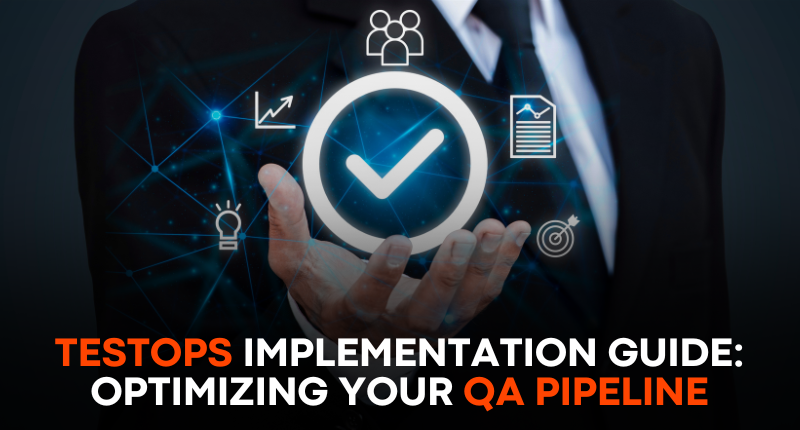In the dynamic realm of software development, achieving a harmonious balance between agility and reliability has become the holy grail. Enter TestOps – a transformative force reshaping the landscape of Quality Assurance (QA). This guide is your TestOps Implementation Guide, providing insights into leveraging the formidable power of TestOps to optimize and streamline your QA pipeline.
Section 1: Unveiling TestOps
What is TestOps?
TestOps, short for Testing Operations, is an innovative approach that fuses testing processes with development and operations, creating a seamless and collaborative workflow. Unlike traditional testing methodologies, TestOps integrates testing into the entire software development lifecycle, ensuring continuous testing and feedback.
Why TestOps Matters
Explore the significance of TestOps in achieving faster releases, improved collaboration, and enhanced visibility into the testing process. Understand how TestOps addresses the shortcomings of traditional testing by promoting efficiency, collaboration, and automation.
Section 2: Assessing Your Current QA Pipeline
Current QA Pipeline Overview Before diving into TestOps implementation, it’s essential to evaluate your existing QA pipeline. Identify bottlenecks, areas of manual intervention, and opportunities for optimization. This assessment provides a baseline for understanding how TestOps can streamline your unique testing challenges.
Key Considerations for TestOps Integration Delve into the factors to consider when integrating TestOps into your QA pipeline. From team collaboration to tool compatibility, these considerations lay the groundwork for a successful TestOps implementation.
Section 3: Implementing TestOps: A Step-by-Step Guide
Step 1: Team Alignment and Training Successful TestOps implementation starts with aligning your team’s mindset and providing the necessary training. Understand the cultural shift required for TestOps and invest in upskilling your team to navigate the changing landscape.
Step 2: Tool Selection and Integration Explore the array of TestOps tools available and choose the ones that align with your QA objectives. Learn how to seamlessly integrate these tools into your existing development and operations environment.
Step 3: Continuous Testing Integration Discover the power of continuous testing in a TestOps framework. From automated testing to continuous feedback loops, this step ensures that testing is an integral part of every development iteration.
Section 4: Monitoring and Optimization
Continuous Monitoring for Continuous Improvement Implement robust monitoring mechanisms to track the performance of your TestOps implementation. Leverage analytics and metrics to identify areas for improvement and optimization.
Optimizing TestOps for Efficiency Explore strategies for fine-tuning your TestOps processes over time. From refining test cases to optimizing automation scripts, continuous optimization is key to extracting maximum value from TestOps.
Conclusion: Embracing TestOps for Future-Ready QA
In conclusion, the ‘TestOps Implementation Guide’ signifies more than a buzzword – it represents a paradigm shift in aligning QA with modern development practices. By embracing this guide in your QA pipeline, you’re not merely adapting; you’re future-proofing testing processes for the dynamic software development landscape.




